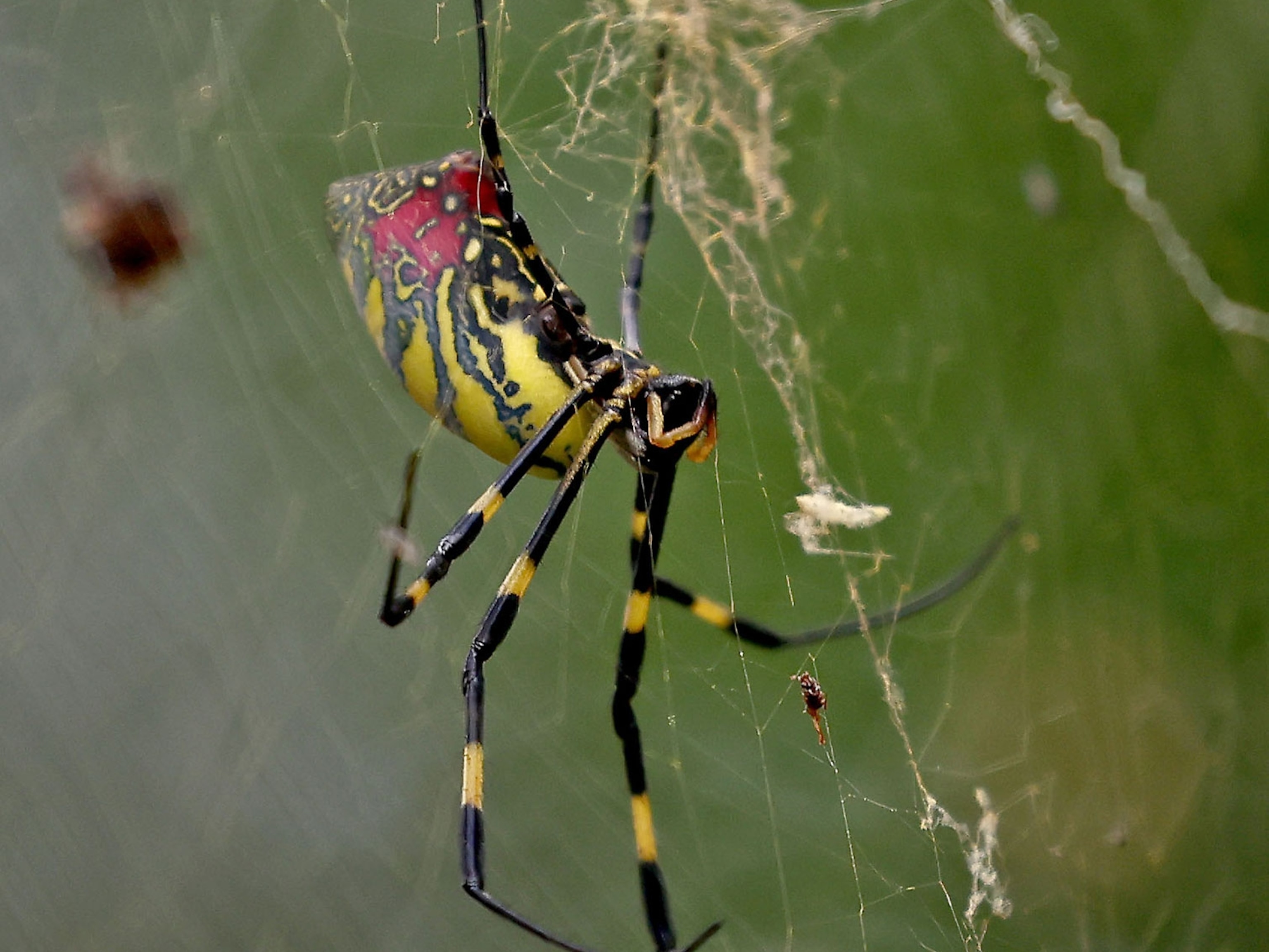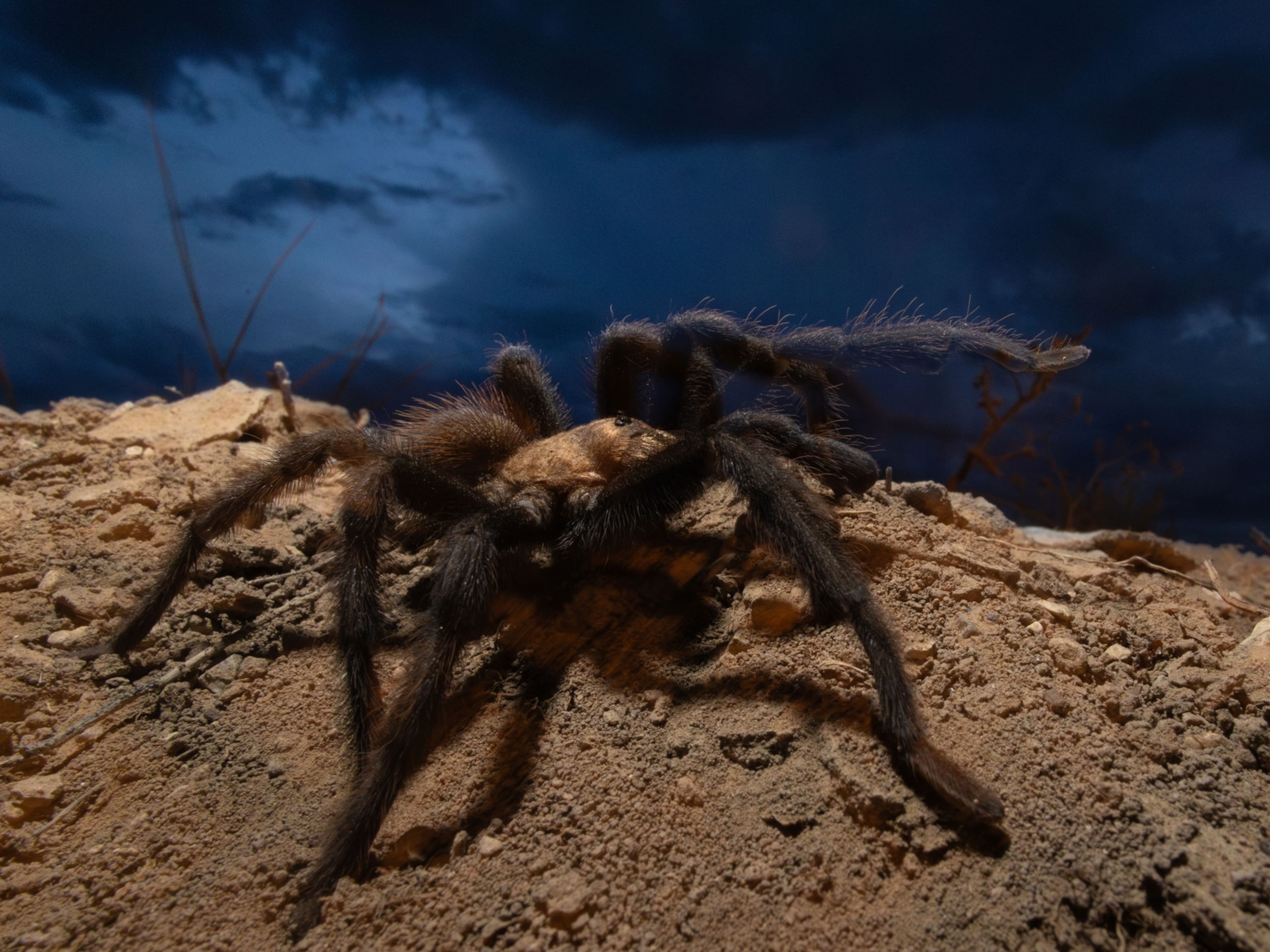
What Should You Do If You Find a Spider in Your House?
For starters, don't panic—and remember that most of the 40,000 known spider species are not venomous.
When a reader from Belgium found a spider in her bananas, she bravely trapped it—and says she took it to the police for identification (though sadly not in four pairs of tiny handcuffs).
In retrospect, she asked us: "What should I do if I have a [venomous] spider in the house?" (See "7 Bug and Spider Myths Squashed.")
For Weird Animal Question of the Week, we asked spider experts Christopher Buddle of Canada's McGill University and Jo-Anne Sewlal of the University of the West Indies how to react when someone screams "SPIDER!"
Don't Panic
Chances are, it's not venomous: Few of the 40,000 known spider species can harm humans, Sewlal says by email. But it's wise to treat a spider as dangerous until you know better.
Identifying a spider as dangerous can be tricky, though some can be clearly deciphered. For instance, the venomous female black widow, found in temperate regions the world over, is black with a red hourglass shape on her underside.
The brown recluse spider, found in parts of the central and southern United States, is brown with a telltale dark brown "violin" on its back, according to the University of California at Riverside's Richard Vetter. (Check out his brown recluse identification guide.)
Sewlal says it’s best to look up venomous spiders found in your area or areas you’re visiting and, in case of a bite, "look for specific information on how to proceed with respect to treatment."
If you find a suspicious spider, it's not necessary to call the authorities, as our reader did. But if you found a spider in your fruit, you can alert the grocery store, Buddle advised by email.
Buddle notes that an eight-year study published in 2014 in the Journal of Medical Entomology shows the "vast majority" of spiders found in fruits aren't dangerous. (Related: "Are Dangerous Spiders Hiding in Your Fruit?")
"Spiders are our friends," Buddle says—they are important predators of insects in crops around the world.
"Just think of the hundreds of times you bought spiderless bananas!"
If You're Bitten, Trap the Spider
In the rare case you do get bitten, it's a good idea to trap the spider so you can identify the species in case treatment is needed, Sewlal says.
Isolate your leggy little tourist—along with fruit, if that's where you found it—in a plastic bag or container, Buddle says. Put that package in the fridge to slow the cold-blooded arachnid down. This makes it easier to brush it into a jar or other container, wearing rubber gloves if you like. (Also see "What Happens If You Swallow a Spider?")
"Do this quickly and with confidence." (Easy for him to say.)
If you're too uncomfortable, Buddle says, you can put the whole shebang in the freezer, which will kill the spider, leaving an intact specimen for identification.
If you're bitten, an ice pack on the area will usually suffice for treatment, Sewlal says, but she suggests seeking medical attention if you experience symptoms such as "increasing pain, nausea, vomiting, sweating, dilated pupils, uncontrollable muscle spasms, and loss of consciousness."
Document Your Visitor
If you are curious about the spider's species, you can photograph it or bring the specimen to a natural history museum or a college. (See a video of the world's biggest spider.)
Buddle recommends the University of California at Riverside and the American Arachnological Society as great online identification resources.
If It's in Your Food, Don't Release It
In case the spider is a non-native species that got into your house via your food, don't release it outside. The animal could harm the native environment. If you found the spider elsewhere in your house, you can put it outside.
If the spider did arrive in your food, "although it pains me to say this [as an arachnologist], the best course of action is to probably to kill the eight-legged cargo," Buddle says—and Sewlal concurs.
Last, the experts say to relax and not worry too much about spiders. Banana daiquiris, anyone?
Got a question about the weird and wild animal world? Tweet me or leave me a note or photo in the comments below. You can also follow me on Facebook.





